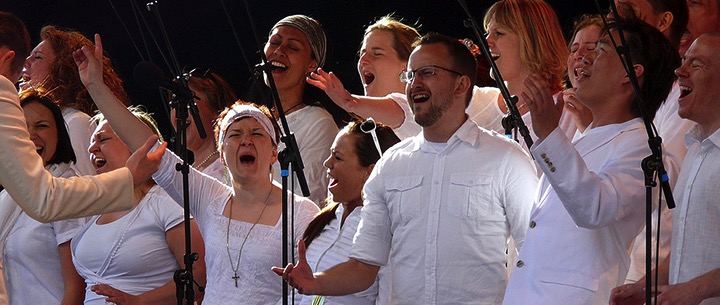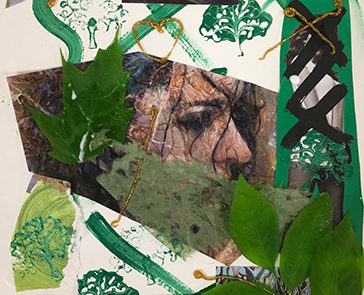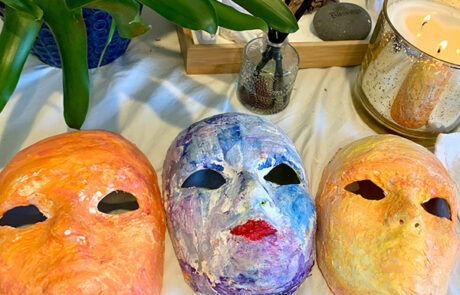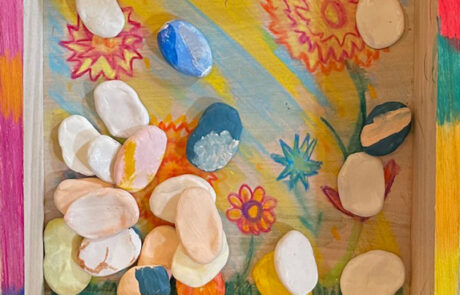
In a landmark art therapy study done at Northwestern Memorial Hospital, after spending just one hour working on art projects of their choice, cancer patients reported significant reductions in eight of nine cancer-related symptoms, measured by the Edmonton Symptom Assessment Scale.
The scientific benefits of creative practices and art therapy are well-documented, life-changing and endless. So, why aren’t more of us living creatively? We don’t know what that means and we don’t where to begin.
In a landmark art therapy study done at Northwestern Memorial Hospital, after spending just one hour working on art projects of their choice, cancer patients reported significant reductions in eight of nine cancer-related symptoms, measured by the Edmonton Symptom Assessment Scale.

The scientific benefits of creative practices and art therapy are well-documented, life-changing and endless. So, why aren’t more of us living creatively? We don’t know what that means and we don’t where to begin.
cre·a·tiv·i·ty
krēāˈtivədē/
noun. the use of the imagination or original ideas – synonyms: inventiveness, imagination, innovation, originality, individuality

I always hear people say, “I’m not creative,” or, “I can’t draw a straight line.” Contrary to popular belief, everyone is creative – and, drawing a straight line is irrelevant. Obviously, some of us come into this world wired to be more creative than others, and there is basis for this in science. That being said, everyone is born with an imagination that can be implemented and augmented for use in creative practices that make us feel good.
In our early years, our child-like minds knew this to be true. If you walk into any kindergarten class and ask, “Who is an artist?” it is guaranteed that almost every hand will shoot up in the air. Practically all of us can remember slapping paint around in the beauty of self-expression, whether it was painting a pumpkin or gluing feathers to a paper turkey – it was all good and felt wonderful. Sadly, by fifth or sixth grade, if you ask the same “Who is an artist” question to a room full of children, there will be hardly any hands in the air.
This is because as we grow, we become self- conscious – worried that “ours isn’t good enough,” or worse, we aren’t good enough. Many of us worry so much about what others think that we lose the connection to our most precious gifts. And, if our creativity isn’t nurtured, our imaginations get stifled. Over time, many of us learn to modulate or even hide authentic self-expression, and cave in to fitting in. Our inborn creativity may bubble up to the surface when we are doing things like cooking, gardening, dancing or playing with our kids, but most of the time, that little spark of genius is held at bay. It has simply gone dormant; buried by life’s layers, waiting to be awakened and used to benefit our hearts and health.
These benefits are backed up by a multitude of research: In 2010, the American Journal of Public Health published a review titled, The Connection Between Art, Healing, and Public Health. Each study examined more than thirty patients battling chronic illness and cancer.
Researchers described the results as follows
- “Art filled occupational voids, distracted thoughts of illness”
- “Improved well-being by decreasing negative emotions and increasing positive ones”
- “Improved medical outcomes, trends toward reduced depression”
- “Reductions in stress and anxiety; increases in positive emotions”
- “Reductions in distress and negative emotions”
- “Improvements in flow and spontaneity, expression of grief, positive identity, and social networks”

Who doesn’t want more of that?
The benefits of creativity go way beyond emotional: According to a Mayo Clinic study, people who engage in art activities (painting, drawing and sculpting; crafts, like woodworking, pottery, ceramics, quilting, quilling and sewing) in middle and old age may delay cognitive decline in very old age. To quote: “Our study supports the idea that engaging the mind may protect neurons, or the building blocks of the brain, from dying, stimulate growth of new neurons, or may help recruit new neurons to maintain cognitive activities in old age” (American Academy of Neurology, 2015).
Translation? Creative practices protect our brains from aging. Whether you decide to sing (regularly) in the shower, paint with your kids, garden, cook, knit or sculpt, know that these joyful experiences not only have benefits in the moment, but they are moments you will remember.



